Hopevale Artists' Statements
Textile Stories
The Hopevale Arts & Cultural Centre is located in the community of Hopevale, Cape York in Northern Queensland. It was established in 2009 as an extension of the community’s longstanding interest in practicing visual arts. The visual practice of the Guugu Yimmithirr artists is characterised by bold, bright, organic contemporary paintings and prints, as well as traditional fibre baskets; used as forms of storytelling and cultural communication.
Below is a collection of artist statements gathered by QUT student, Alexandra Nash, that detail each Hopevale artist’s thought process behind each of the textiles given to the 2018 FFC team.
The textiles are printed by Publisher Textiles & Paper in Leichhardt, Sydney.
Publisher Textiles Website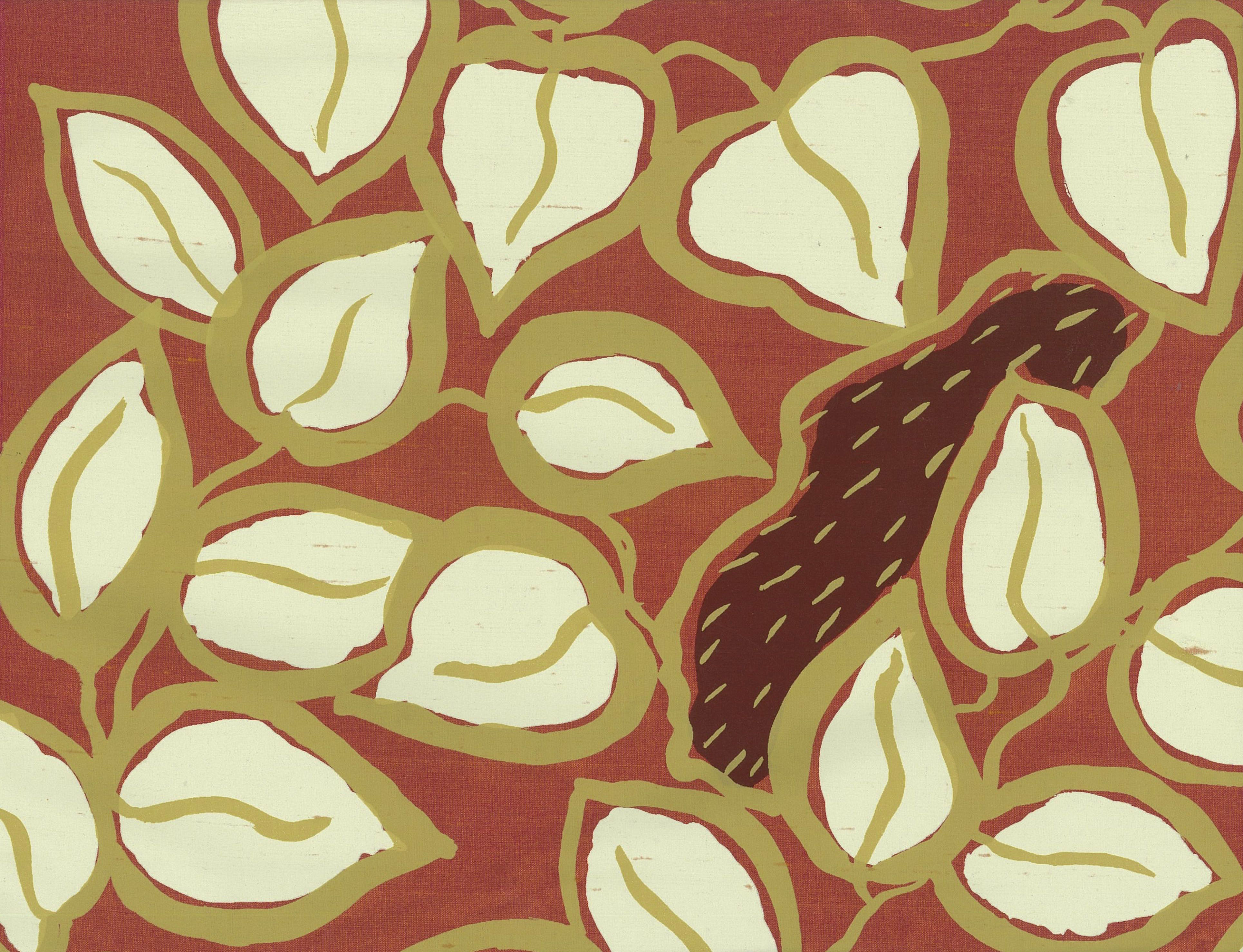
Wugay
by Grace Rosenthal
Grace is a 73 year-old artist that has been working with the Hopevale Arts and Cultural Centre since 2008. Her art is closely tied to her homeland ‘Eenghii’.
The “Wugay” piece is a 3-colour print in earthy warm and green hues. It draws inspiration from the natural landscape of the Eenghii area focusing particularly on the native flora shapes surrounding the lagoons/lake. The colours reflect the natural palette of the mountains and bodies of water in the area. With gardening as a dear hobby, Grace finds her painting draws her into a closer connection with the land.
The original art was produced on a canvas which was reprinted on 55% linen, 45% cotton, and silk dupion.
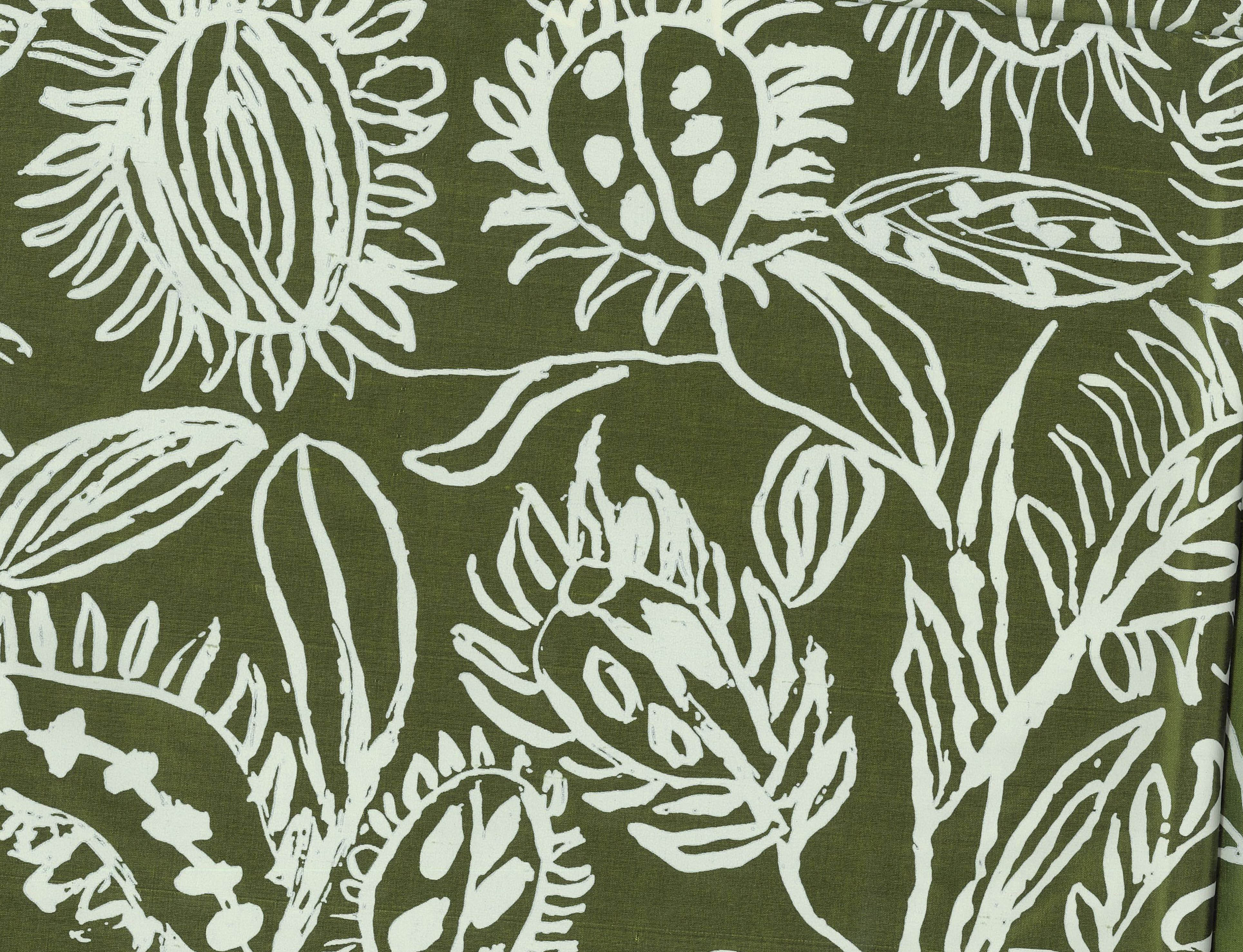
Yaruun
by Gertrude (Gertie) Deeral
The ‘Yaruun’ print is a 2-colour print that was reproduced in Leichhardt in dusty grey and green variations.
The material appears in Forging Fashion Connections in both colour variations as vibrant dress, pant and jacket designs. Appearing in both the Intertwined and Bulmba-barra – When bare feet touch the earth displays of the collection, the unique fabric design continues to inspire shapes and silhouettes echoed in the collaboration.
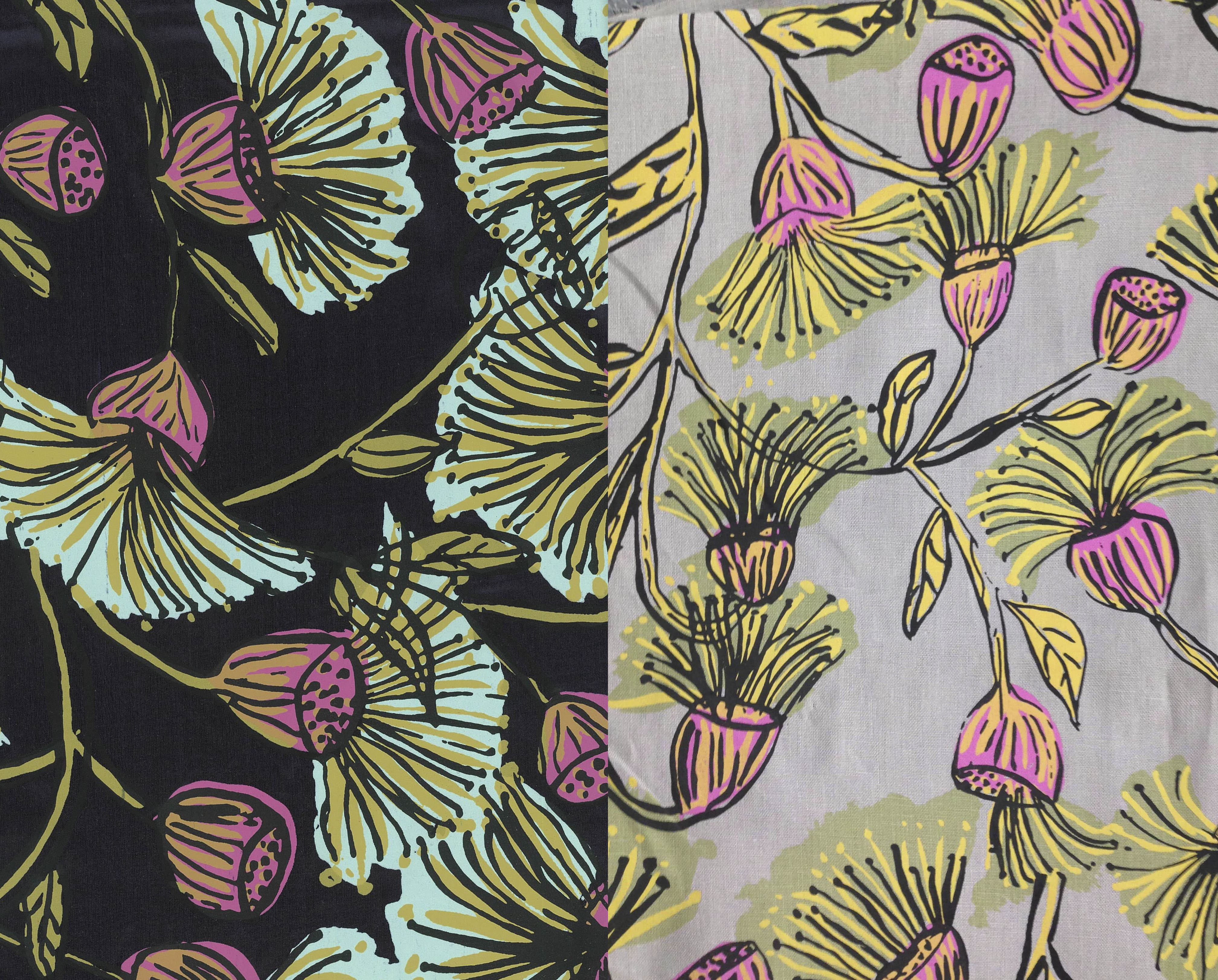
Babatha
by Dora Deeral
Dora began her work with the Hopevale Arts and Cultural Centre in 2005 and continues this commitment today at age 74. She admits that she “didn’t know anything about painting” at the beginning, however, she was encouraged by community members to learn traditional techniques and become more confident in her skills.
In the ‘Babatha’ print, 4-colours appear in the grey and navy variations. The piece draws key inspiration from Dora’s homeland as well as that of her late husband’s; “I paint images from my homeland.” The cool colours appearing in the flora correlate with the blue lagoons that appear in her region and the “coloured sands” hues nod to her husband’s side.
Her original works are produced on a canvas in the company of several of Hopevale’s artists.
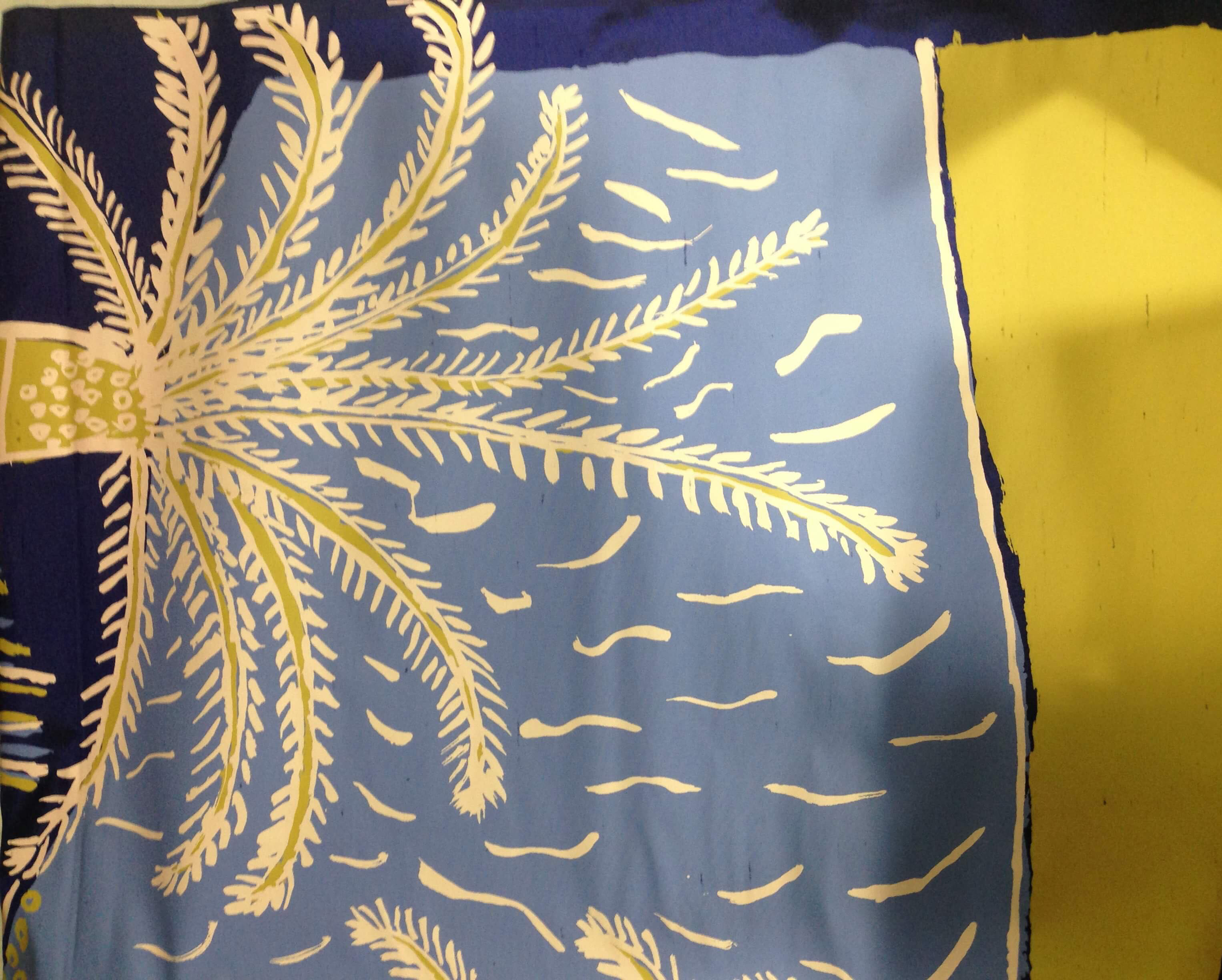
Bulgun
by Madge Bowen
Madge has been involved with the Hopevale Arts and Cultural Centre for over 10 years. At age 72, her involvement began with a desire to step outside her home and reconnect with the community. Family events and ceremonial land play a primary role in inspiring her designs.
The “Bulgun” piece is a 3-colour print in chartreus, pale blue and cream hues on a silk dupion base.
The piece draws its inspiration from key aspects of Madge’s homeland with detailing on the trees that acknowledge native features of the species. The lakes which feature in the piece reflect the movement of the water as turtles and tortoises reside in it.
In producing each artwork, Madge paints her designs on a canvas in the company of others from the centre. Using the space outside, she feels best connected to the land and its’ Dreaming stories.
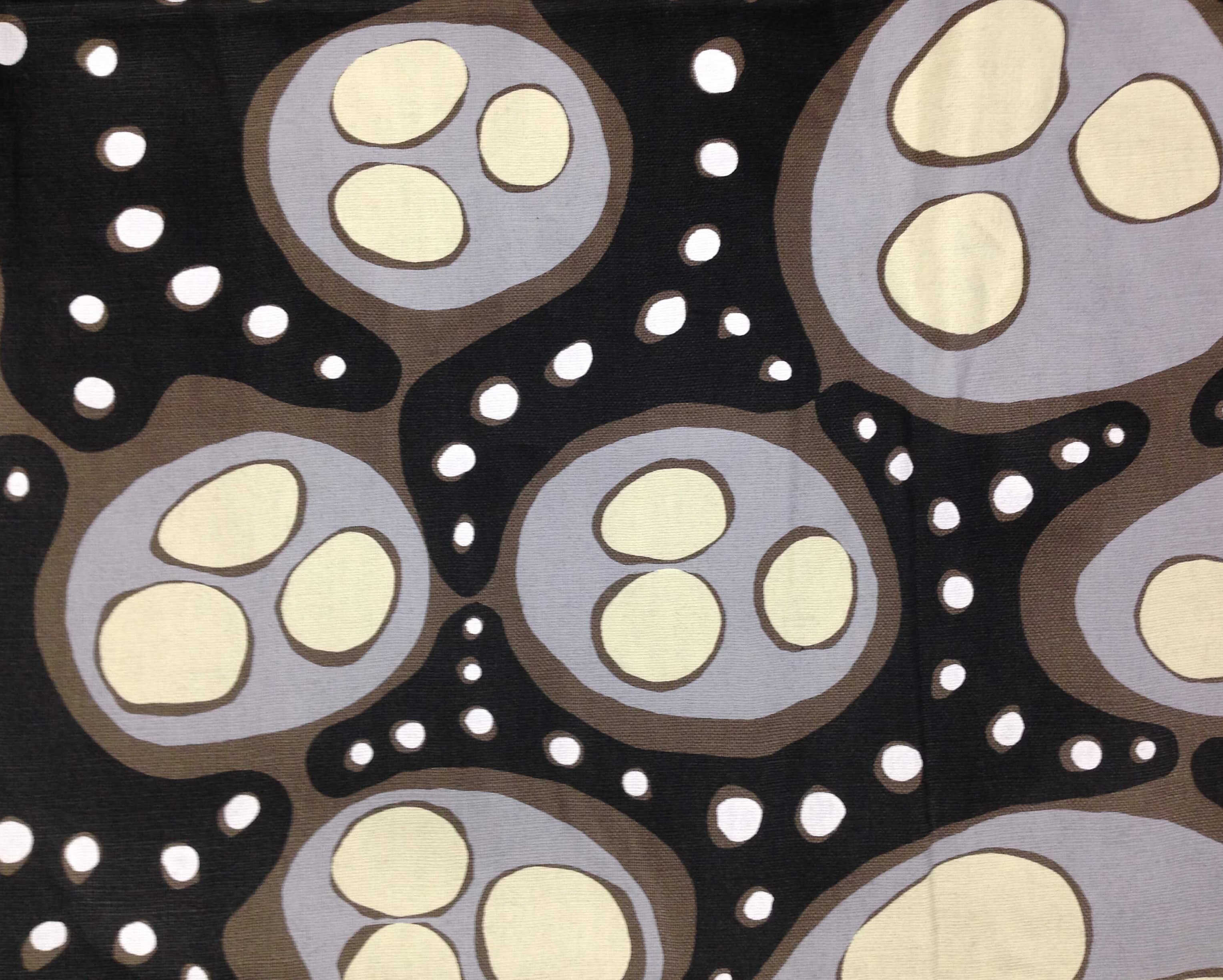
Untitled Work
by Harold Derek Bowen
Harrold “Harry” at age 46 has been involved in the Hopevale Arts and Cultural Centre since 2009. Working previously in the Electrical Mechanic trade, his father inspired him to become more artistically inclined. He claims that growing up in a household with artistic parents, that worked primarily with wooden artefacts, enabled his appreciation for the arts to fall “into [his] lap.”
The piece is a 4-colour print which appears in 2 colour variations: on a grey base and navy. Harry draws his inspiration for his artwork from the intersection of several landscapes rather than singularly his homeland. “I like to look at nature itself and the combination of colours that nature works with.”
One experience reflective of his passion for differing landscapes spans back to his travel down the west coast of America near San Diego in 1989. Being raised in a Queensland climate, he was shocked by the blizzardy climate of the United States as waves of snow hit him upon leaving the airport.
Each of these life experiences filter into the colour and shapes selections for his art. Harry uses acrylic paint on Belgium linen as a personal preference to produce his original designs. He believes that the artist holds the freedom to expand and explore new techniques or traditional ones to create art. Ultimately it is all about the artist “presenting their story for all to see.”
